
In case you haven’t noticed, whole grains are a big deal these days. Highly processed foods like breakfast cereals and sliced breads brag about how many servings of whole grains you can find in each serving. There are also a large amount of health benefits associated with eating whole grains, despite what consumers of low-carb diets would have you believe. (HEY, there are many options out there, and each person is an individual. I’m not knocking low-carb here.) Here’s a list of five of my favorites and some recipes to try!
- Bulgur
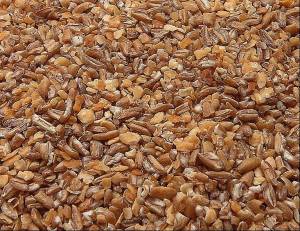
Do you have a distinct memory of when you first tried a few food? I do. It was March of 1999. I was 17 years old, and on my senior trip to Disney World. Animal Kingdom had just opened the year before, and my friends and I were there right around lunch. We stopped at a little African-themed cafe to grab some food, and wouldn’t you know it, tabbouleh was on the menu! One taste of the bulgur and parsley salad and I was hooked. It also happens to be The Hubs favorite salad, because it includes no lettuce!
When wheat kernels are boiled, dried, cracked, then sorted by size, the result is bulgur. This wheat product is sometimes referred to as “Middle Eastern pasta” for its versatility as a base for all sorts of dishes. Bulgur is most often made from durum wheat, but in fact almost any wheat, hard or soft, red or white, can be made into bulgur.
Because bulgur has been precooked and dried, it needs to be boiled for only about 10 minutes to be ready to eat – about the same time as dry pasta. This makes bulgur an extremely nutritious fast food for quick side dishes, pilafs or salads. Perhaps bulgur’s best-known traditional use is in the minty grain and vegetable salad known as tabbouleh.
Health bonus: Bulgur has more fiber than quinoa, oats, millet, buckwheat or corn. Its quick cooking time and mild flavor make it ideal for those new to whole grain cooking.
I couldn’t leave this grain without giving you a recipe for tabbouleh! This one at thewanderlustkitchen.com is pretty close to mine, just add liberal amounts of ground sumac:
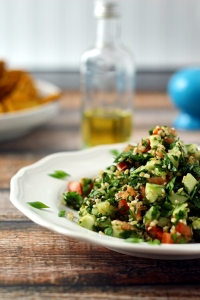
2. Sorghum

I first tried sorghum after a trip to the bulk foods section of Whole Foods. My first experiment was sorghum risotto… on a very hot summer day… when I was refusing to turn on the air conditioning. Never again. Sorghum takes longer to cook than other grains, so prepare for that.
Farmers on the Great Plains from South Dakota to Texas appreciate that sorghum thrives where other crops would wither and die; in drought periods, in fact, it becomes partially dormant. Worldwide, about 50% of sorghum goes to human consumption, but in the U.S., most of the crop is fed to animals, made into wallboard or used for biodegradable packing materials.
That’s a shame, because sorghum, also called milo and believed to have originated in Africa, can be eaten like popcorn, cooked into porridge, ground into flour for baked goods, or even brewed into beer.
Health bonus: A gluten-free grain, sorghum is especially popular among those with celiac disease.
I haven’t tried this recipe from Natural Noshing, but it’s on my list!

3. Farro/Emmer
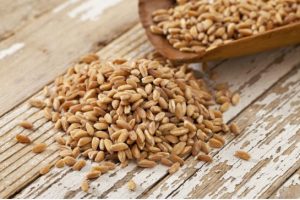
Farro is another one of those foods I discovered at a restaurant. UNO’s to be exact! Several years ago at the beginning of my journey I was trying to eat as healthfully as possible while still enjoying a restaurant meal, and I discovered their farro salad, a delicious combination of tomatoes, cucumbers, farro and balsamic, had half the calories of an order of french fries.
Emmer, an ancient strain of wheat, was one of the first cereals ever domesticated in the Fertile Crescent, and centuries later, it served as the standard daily ration of the Roman legions. But over the centuries, emmer was gradually abandoned in favor of durum wheat, which is easier to hull.
By the beginning of the 20th century, higher-yielding wheat strains had replaced emmer almost everywhere, except in Ethiopia, where emmer still constitutes about 7% of the wheat grown.
In Italy – and increasingly throughout the world – emmer is known as farro or grano farro or farro medio(“medium farro”) and is staging a comeback as a gourmet specialty. Semolina flour made from emmer is still used today for special soups and other dishes in Tuscany and Umbria, and farro is thought by some aficionados to make the best pasta.
I found this delicious looking recipe at ahintofhoney.com:
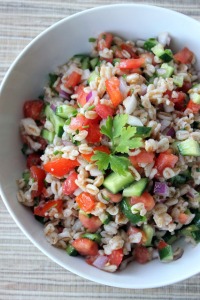
4. Millet
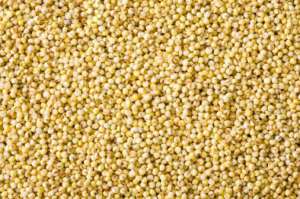
Millet was another restaurant discovery, this time, it was a health food store cafeteria, specifically Good Foods Grocery in Richmond, Virginia (Stony Point location to be precise). They make an amazingly delicious Black Bean Sweet Potato burger that includes millet. Millet has a buttery quality that makes it feel absolutely naughty when you eat it, and is one of my favorites on this list. It’s easier to cook and less chewy that most of the other grains here.
Millet is not just one grain but the name given to a group of several small related grains that have been around for thousands of years and are found in many diets around the world. In fact, millets are the leading staple grains in India, and are commonly eaten in China, South America, Russia and the Himalayas. Now people in the United States are beginning to realize what they’ve been missing! Millet’s incredible versatility means it can be used in everything from flatbreads to porridges, side dishes and desserts – even fermented and consumed as an alcoholic beverage.
In addition to being cooked in its natural form, millet can be ground and used as flour (as in Indian roti) or prepared as polenta in lieu of corn meal. As a gluten-free whole grain, millet provides yet another great grain option for those in need of alternatives. Easy to prepare, and becoming easier to find, millet has finally made its way to the American table. Millet can be found in white, gray, yellow or red; and the delicate flavor is enhanced by toasting the dry grains before cooking.
Health bonus: Millet is naturally high in protein and antioxidants, and can help control blood sugar and cholesterol.
I’ve eaten millet several ways, but this recipe from thegreenforks.com is one of my favorites (clicking on the image will take you to the recipe):
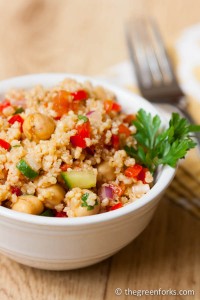
5. Quinoa
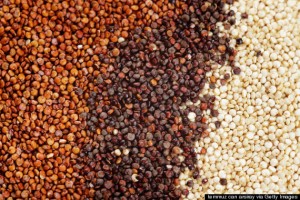
Okay, you’ve probably heard of Quinoa, it’s everywhere these days and definitely trendy. It’s also pretty flippin’ delicious!
Quinoa (keen-wah) comes to us from the Andes, where it has long been cultivated by the Inca. Botanically a relative of swiss chard and beets rather than a “true” grain, quinoa cooks in about 10-12 minutes, creating a light, fluffy side dish. It can also be incorporated into soups, salads and baked goods. Commercially, quinoa is now appearing in cereal flakes and other processed foods. Though much of our quinoa is still imported from South America, farmers in high-altitude areas near the Rockies are also beginning to cultivate quinoa.
Quinoa is a small, light-colored round grain, similar in appearance to sesame seeds. But quinoa is also available in other colors, including red, purple and black. Most quinoa must be rinsed before cooking, to remove the bitter residue of saponins, a plant-defense that wards off insects. Botanists are now developing saponin-free strains of quinoa, to eliminate this minor annoyance to the enjoyment of quinoa.
Health bonus: The abundant protein in quinoa is complete protein, which means that it contains all the essential amino acids our bodies can’t make on their own.
I’ve eaten quinoa about a billion different ways (it’s my story and I can make it as big or as small as I want to) but this recipe from blissfulbasil.com just blew my mind and I am definitely making it again this fall!
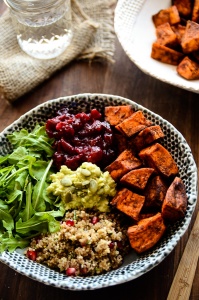
How many of these whole grains have you tried? Will you try some you haven’t? Let me know in the comments!

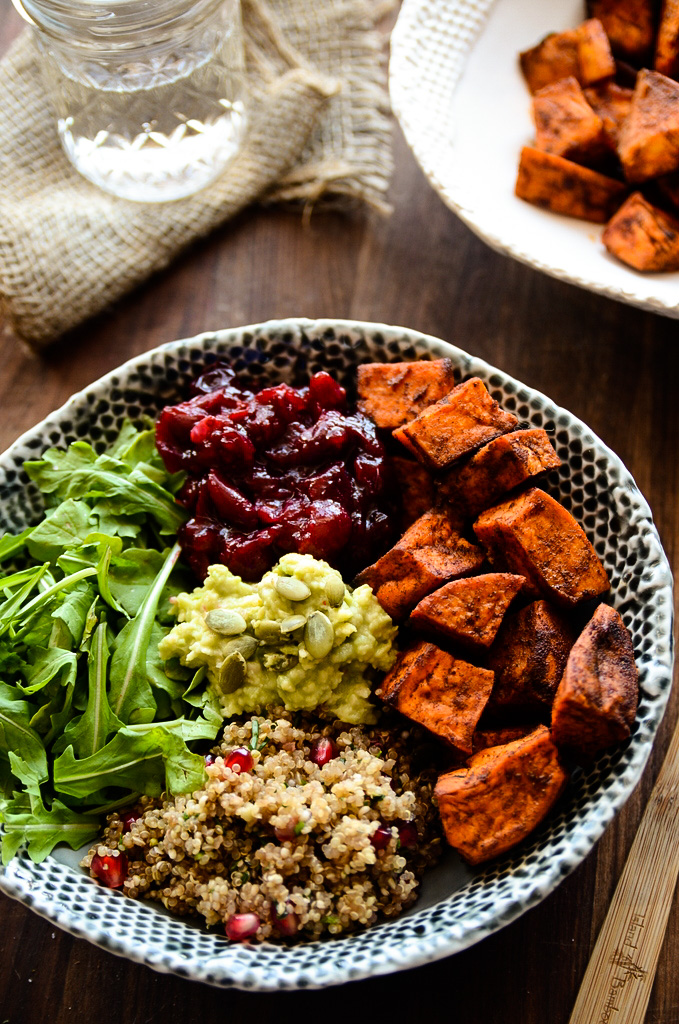
I really want to try Bulgur. Will have to add it to the grocery list this week! 🙂 Great blog!
LikeLiked by 1 person
Bulgur is a perfect entry level grain because for tabbouleh you don’t even have to cook it. Let me know how you like it!
LikeLike
You know, I’ve had both sourghum and millet in combo things(I believe both are used in my favorite gluten-free bread), but I never considered trying them in their own right. I’ll have to investigate.
LikeLiked by 1 person
They’re both good, but I really love millet!
LikeLiked by 1 person
So now I’m gonna try millet. SOUNDS naughty and the recipe sounds delicious! Thanks SD!
LikeLiked by 1 person
I hope you like it! 🙂
LikeLike
This may be my favorite post of yours yet! There is so much I don’t know about alternative grains
and unusual spices and this post gives me plenty of ideas for recipes featuring both. And all of it is
coming at a time when it is finally cool enough for all of us to feel like cooking. I like the idea of the grains
being an alternative to meats too. Less meat and new grains means healthy, less expensive, and
something new and interesting to try. Thank you, thank you!
LikeLiked by 1 person
Oooh, now I need to go through my spice rack and write a spice blog! 🙂
LikeLike